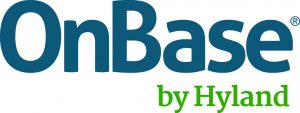State and local governments have long endured staff shortages and shrinking budgets. That’s forced agencies to re-imagine the way they combine technology and personnel to build the most efficient processes that also meet citizen needs. Now, spurred by White House memorandum OMB 17-22, federal government is being challenged to do the same.
The April 2017 memo calls on agencies to “create a lean, accountable, more efficient government” by scrutinizing processes, eliminating redundant programs and reducing the federal workforce. What’s more, it’s given agencies minimal time – less than three months until their June 30th deadline – to develop a plan for making those drastic changes.
That directive has led many agency leaders to worry how they’re going to achieve their missions with diminished assets. But, while workforce reduction is certainly in the cards for many agencies, it doesn’t have to be the staple of this new, lean government. Instead, leaders can take a page from state and local governments’ playbooks. Faced with similar constraints, those agencies have embraced new delivery models – servicing citizens every day by eliminating paper, automating processes, and offering self-service options.
Federal agencies can do the same by strategically adopting new technologies. For instance, a single enterprise information platform for managing content, processes and cases can streamline workflows. That saves agencies time and money, without having to reduce staff. In fact, an effective enterprise content management (ECM) system can actually increase your worker’s efficiency.
More than just reducing government overhead, OMB memo 17-22 aims to “strengthen agencies by removing barriers that hinder front-line employees from delivering results.” The right technologies that eliminate paper waste, increase automation and provide self-service options can make that ambition a reality. With robust ECM, federal agencies can achieve:
- Integration: By connecting IT systems across the enterprise, workers can make the most of the systems they have, as well as the information within them. Integration streamlines workflows, allowing information to get into the right hands quickly and more securely.
- Automation: By automating data capture from scanners, electronic locations and mobile devices – and ingesting data in a variety of ways, ECM automatically extracts data from incoming documents. This minimizes manual data entry and speeds up processes. Platforms like Hyland’s OnBase can also automate repetitive tasks while delivering meaningful exceptions to the right people at the right time. That saves times on turn-key requests while allowing your workers to focus on high-level needs.
- Online services: With ECM, agency employees can transform the way they interact with citizens. Government information can be strategically organized online so that users can easily navigate to relevant information. Similarly, employees can publish or update online materials quickly, as citizens demand better information.
- Self-service: ECM also takes a significant burden off agency workers by providing citizens users with self-service portals. Rather than dedicating time to completing routine tasks, ECM can spin up easy-to-use, self-help features so citizens can find information on their own. That makes for happier citizens, even as it reduces workloads for employees.
- Case management: One of the biggest stumbling blocks for citizens and government workers alike is the complex bureaucracy that simple requests have to navigate for completion. When handled manually, those cases often accrue significant labor costs without ever fully meeting citizen needs. ECM simplifies and monitors those processes through case management, allowing public servants to quickly assess the status of requests and access the appropriate information to complete them.
- Shared services: ECM can extend across your entire organization, allowing you to connect and expand your existing systems without accumulating costs. That also lets you leverage shared services models in acquisition, reducing upfront and scaling costs even as you increase the scope of your ECM.
- Rapid application development: Finally, as new needs arise in government, agencies can use ECM to quickly create new content and applications to satisfy citizens without acquiring costly new IT systems and platforms. With rapid development, agencies can quickly address the needs of tomorrow, even as they confront the budget realities of today.
State and local governments have already proved these cost- and time-saving benefits can be attained with the right technology. These agencies have leveraged ECM capabilities to confront the new realities of government – where citizens expect superior, online service even as agency’s financial and labor resources decline.
With the new administration putting equal pressure on the federal government to strike this balance, more agencies will seek resources that increase efficiencies and minimize workload. An enterprise content management system like Hyland’s OnBase can do just that through automation, integration, and more.





Leave a Reply
You must be logged in to post a comment.